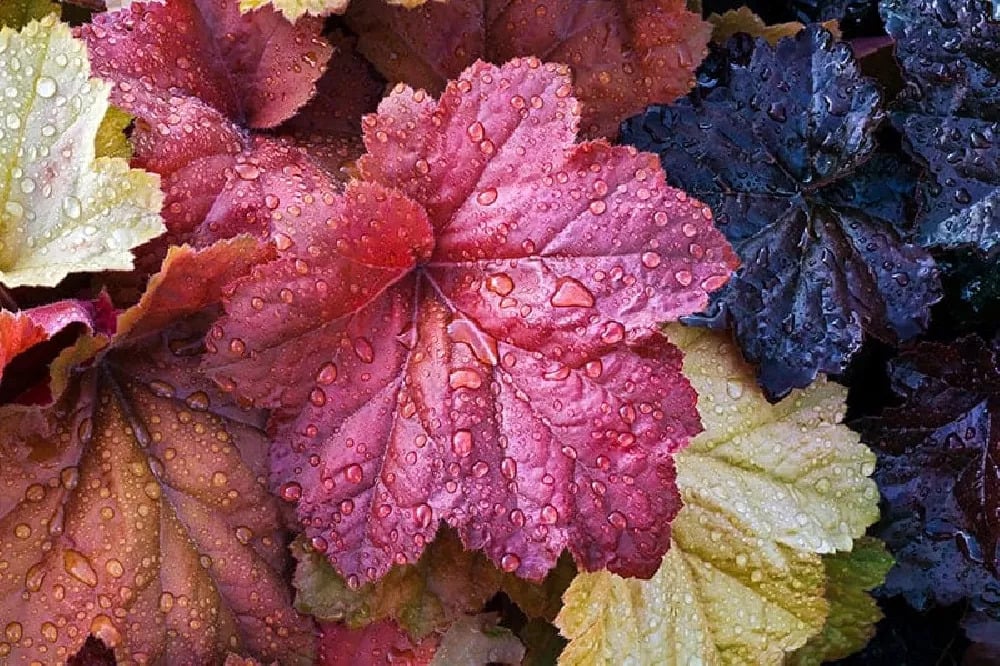Table of Contents
Are you looking to add a touch of enchantment and colour to your garden? If so, you’ll be glad to know about the beautiful Heuchera plants. They are primarily planted in their garden for a huge range of foliage colours. This plant comes in handy with a wide variety of colours of its vibrant foliage.
Whether you’re an experienced gardener or a beginner understanding the essentials of Heuchera plant care and growing tips is a must. Planting them for the beautiful sight is fine, but taking care of the plant is the most important factor. Imagine waking up to the most vibrant and beautiful garden and saying good night with a peaceful mind. Yes, nature is mind-boggling. The heuchera leaves, often boasting intriguing textures and shapes, create an exquisite visual contrast.
The leaf colours, from deep burgundy and regal purple to lime green and shimmering silver, produce a huge variety of colours. The flowers bloom on elegant stalks during spring and summer. In this guide, you will see the heuchera plant care and growing tips.
Overview of Heuchera
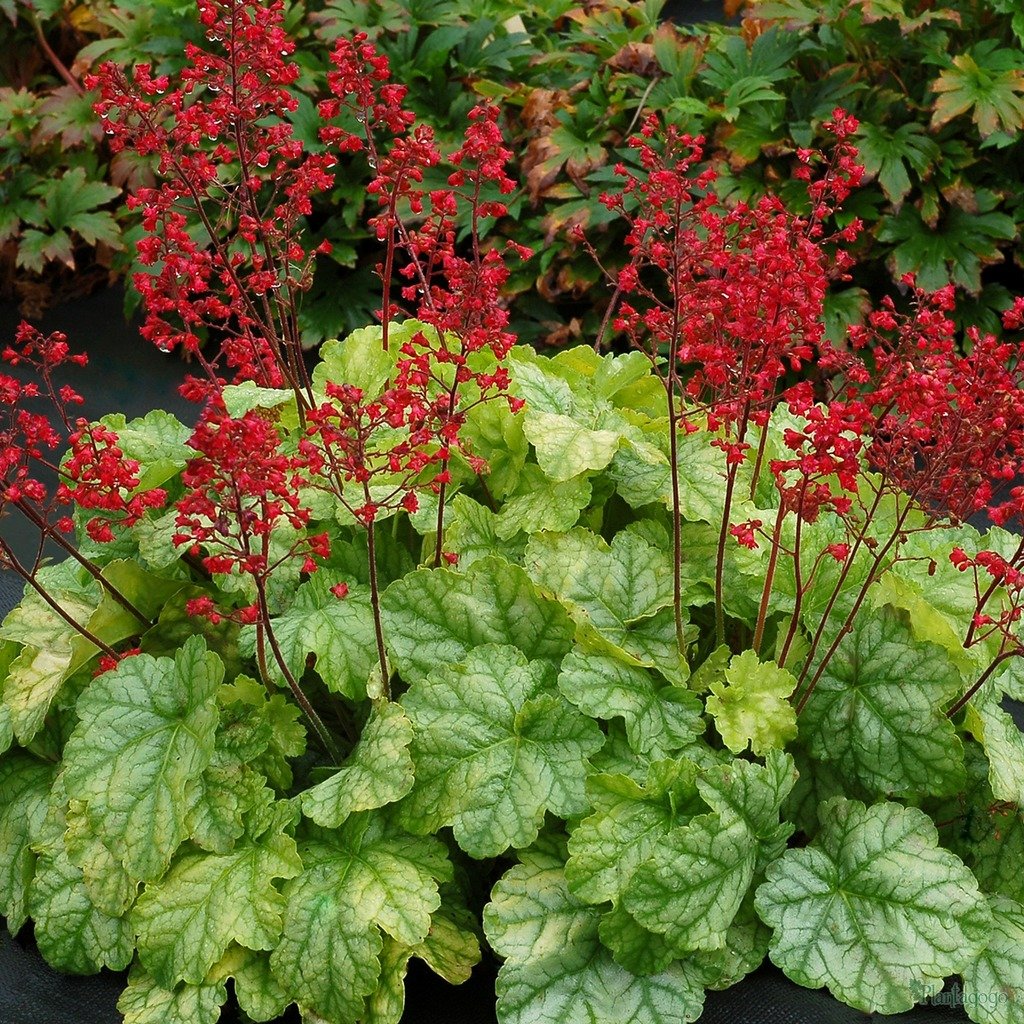
Heuchera is a short-lived perennial and predominantly evergreen plant. They belong to the Saxifragaceae family, which is native to North America. The plant has a thick, woody rootstock and grows 20 to 30 cm tall. In this genus there are approximately 37 species are found. The plant has common names like coral bells and alumroots. Alumroot species grow in varied habitats, and they are used for medicinal purposes as a pain reliever by most cultivators. Heuchera is mostly grown for its foliage. The leaves come in many colours, like red, purple, vivid green, and even silver. Heuchera is an excellent ground plant and will work well in pots during winter.
The plant is attractively lobed or scalloped. They undergo colour changes with the respective seasons. The plant is low-maintenance and found in river banks, littoral zones, forested regions, and even in rocks and crags. Heuchera will provide valuable colours in winter and will produce dainty flowers in summer, attracting bees. The plant is famous and mostly planted for its ornamental foliage for their landscape.
Step-By-Step Process to Plant Heuchera
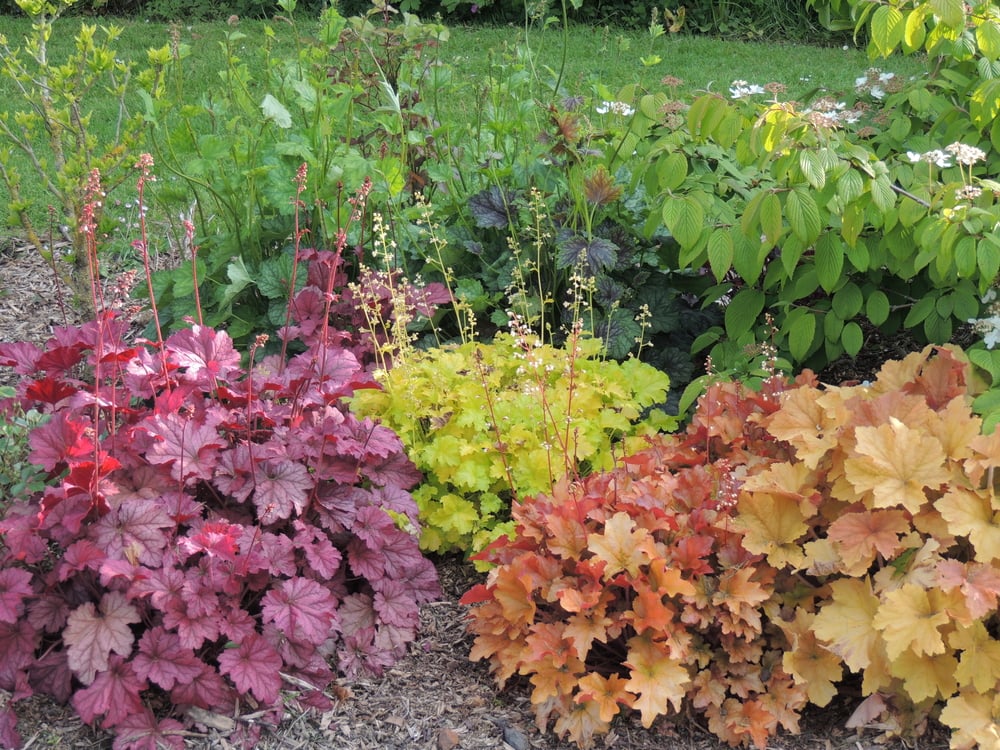
- Pick a spot with a partial shade position.
- As you know, heuchera will not tolerate waterlogged soil but will tolerate dry conditions.
- If the soil is heavy and not well-drained, add compost or grit and dry it well.
- Dig a hole twice in the root ball.
- Spread some fish blood or bone into the ground.
- Place the plant into the soil, filling in the soil with the same depth as it was in the container.
- The top of the root ball is planted below the soil surface there is a risk of rotting.
- After planting, fill the root ball and firm the soil gently but firmly.
- Water the plant surrounding ground for the plant to settle well.
Divide and Conquer
After three to four years, the plant will look collapsed and large, and the foliage will no longer be upright. That is the right time to divide the plant and grow as many plants as possible. Late May to early June will be the best time because the new plant will start to root out quickly. When you lift the foliage, you will find the horizontal lying stem in the ground.
It is easy to pull the stem away from the plant. Not rooted and horizontal stem will have foliage upright. Remove all the stems that are not showing any further growth. Remove all the dead and unhealthy plants, so you will have a few good-quality leaves left. The small leaves have a low chance of getting affected by rust or other diseases.
Preparing for Winter
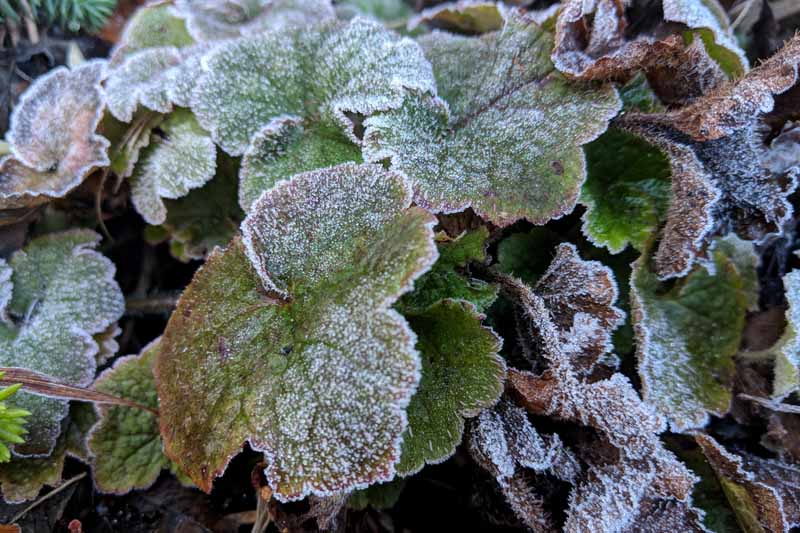
Although heuchera plants are evergreen in mild climates, the top of the plant will likely die during the winter. This is normal during winter. Ensure they are planted in well-drained soil because plants will freeze in wet conditions. If the soil is soggy, treat it with organic material first and then plant them. Cut the plant back to 3 inches in early winter.
If you are living area of mild winter, do not cut back. However, it is the best time to remove the dead and damaged leaves. Water them in late fall and before winter arrives. If plants are well-hydrated, they are healthy and will survive freezing conditions.
Add 2 to 3 inches of mulch, such as compost, fine bark, or dry leaves. When it comes to overwintering heuchera, protecting them with cover is most important. It will help in preventing damage from freezing.
Caring Tips for Heuchera
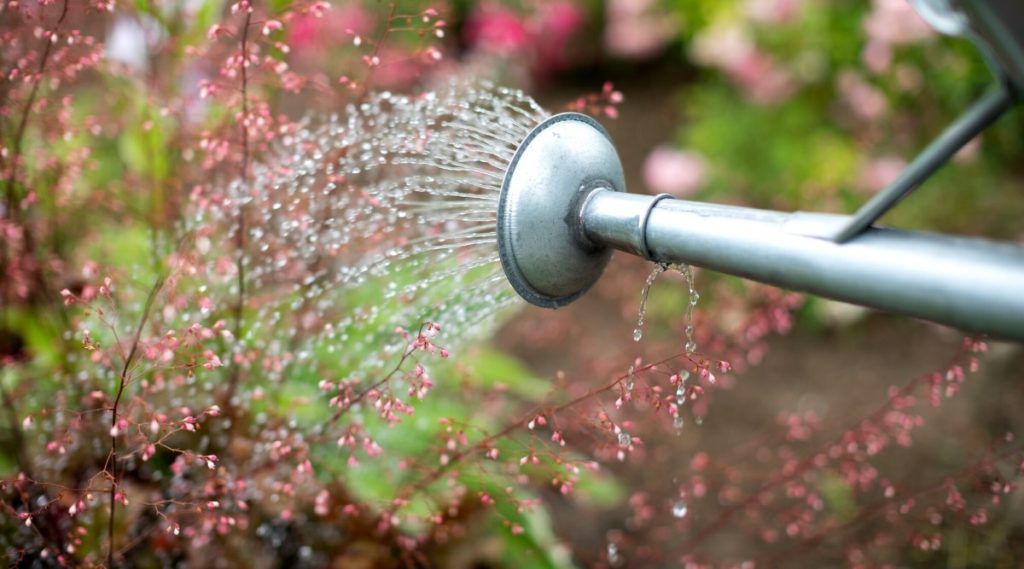
Planting a flower or plant in the garden needs knowledge about certain criteria. While considering growing or caring for the heuchera, the common factors should be considered. The factors are soil, light, watering, fertilizer, and mulching. Let’s discuss each of them:
1. Provide Balanced Soil
Heuchera is mostly grown in woodland areas that will take root in cervices and steep slopes, producing better drainage. To grow the plant healthy, try to replicate its natural environment. The plant needs soil that has good nutrition conditions and full organic matter. Do composting twice a year to support heuchera as fertilization is concerned.
They prefer soil that is too heavy and full of clay. Amend them with sand and larger quantities of compost before planting. They do not do well in heavy, dense soil. Heuchera should be planted in light, loose, sandy dense soil. Moist and well-drained soil will do good.
2. Required Proper Sunlight
Heuchera will adapt to any lighting conditions. They are considered shade plants. The plant will do best in 4 to 6 hours of direct sunlight. The plant will also do good in full-sun conditions. Each cultivar has a different preference when it comes to light.
Heuchera in dark colour can withstand full sun, and plant that is light-coloured prefers shade. If the coral balls are a purple or red darker shade, it needs more sunlight. If the plant is yellow-green and light in shade, it needs more shade.
3. Water It in Prudent Way
Water heuchera after the first planting and wait till they settle down. Then water them regularly, at least during the growing season. Avoid wetting the leaves of the plant; it may cause fungus or disease. Already planted or established heuchera should be watered if they are dry.
Heuchera in containers will dry quickly as there is only limited compost in the pots. So, the containers’ plants should be watered regularly during the summer and spring. Do not allow the compost in the containers to get waterlogged, especially during the winter. The plant requires consistently moist soil.
4. Apply Fertilizer
Heuchera growing in borders do not need fertilizers. If you want to boost plant growth, you can apply general-purpose fertilizer in spring. You can also add fish bones or blood, Vitax Q4, to the plant for better growth. Follow the instruction in the package for the best results!
Heuchera is a light feeder, and it will benefit from fertilization. It is advised not to use heavy fertilizer for this plant. During spring, apply ½ inch of aged compost for additional nutrients. Adding too much fertilizer will result in excess foliage growth and less number of flowers.
5. Mulching Technique
During spring, apply a thick layer of mulch of organic matter. This will prevent weed germination and will hold moisture throughout the summer. Avoid improper or poor compost and buy good quality compost. Another good compost for coral bells is pink bark. The pink bark has a longer life span. The pink bark compost will last 2 years as others will break down in 1 year.
The compost will protect the ground from overheating and freezing. This mulch will keep the plant comfortable in both winter and summer. The pink bark will make it hard for the weeds to grow, so mulch them for a 2-inch layer. Do not mulch closer to the stem. Keep a gap for at least 1 inch between the stem and mulch. If the stem is buried in mulch, it will rot.
Best Time to Plant Heuchera
The best time to plant heuchera is during spring and summer. Plant them when the ground is moist and warm so they are settled easily. However, it can be planted any time of the year, but during winter, plant them before the ground isn’t frozen.
During summer, plant them before the ground is parched. In summer, the plant needs some extra care by watering the plants regularly in their dry conditions. During winter, protect them from frost and heavy winters by covering them with a breathable paper cover, or if it is a potted plant, bring them indoors.
Pests and Disease Problems
Heuchera Rust
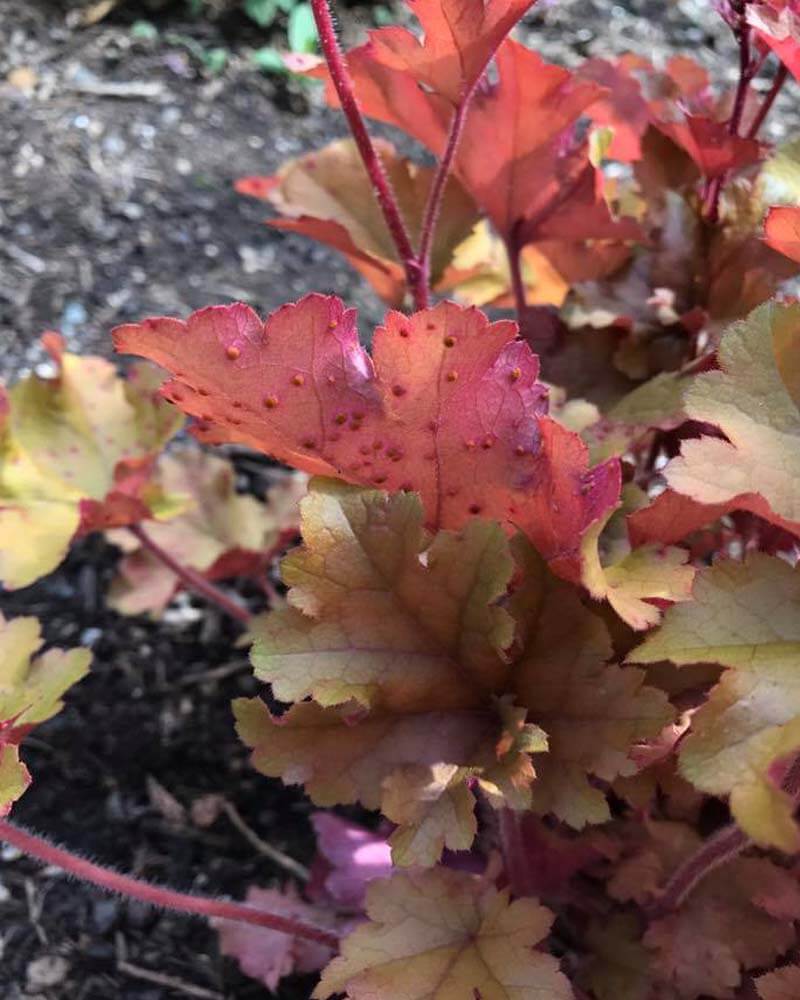
The heuchera is prone to problems, and one such is rust. They are fungal infections which is the foremost problem among others. This problem includes general fungal infection also. This problem appears mostly during hot conditions. If you identify a small rust-coloured raise in the underside of the leave, that is Rust. Frequently remove damaged plants.
Vine Weevil
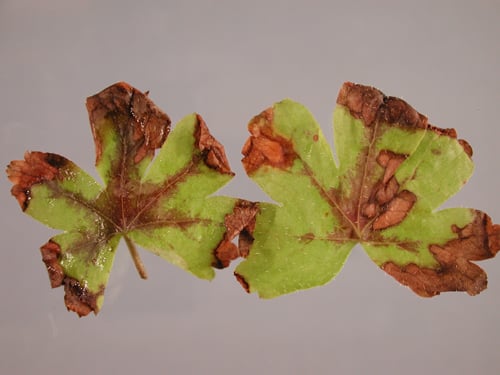
The first symptom is little notches on the edges of the leaves, which were eaten by Vine Weevil at night. The second symptom is the plant starts to fail due to lack of water because the grubs have eaten most of the root. Do not let the vine weevil lay eggs under the plant, which will cause serious damage to the plant. Keep monitoring the plant often to prevent this problem.
Variety of Heucheras
1. Melting Fire
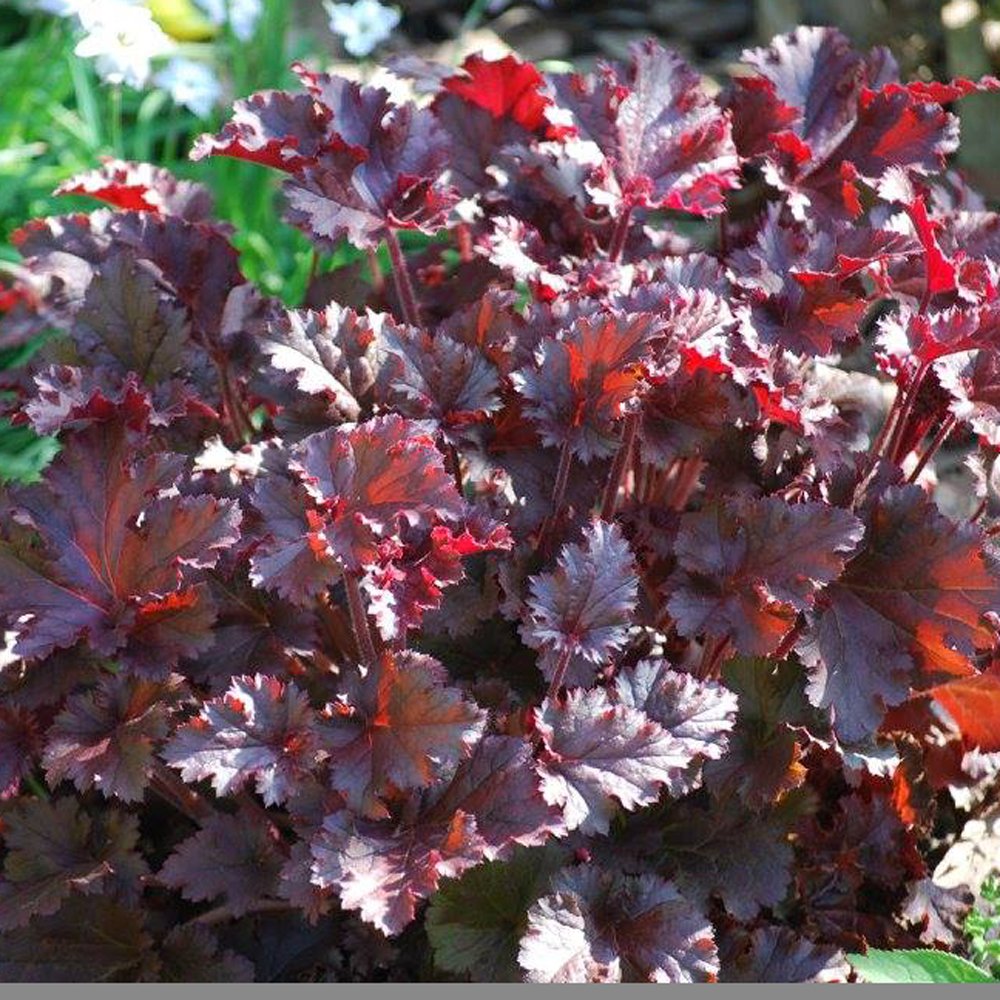
- Colour: crimson to purple foliage
- Height: 9 to 18 inch
- Light: Full sun to partial shade
- Bloom time: They appear during the late spring
2. Lime Marmalade
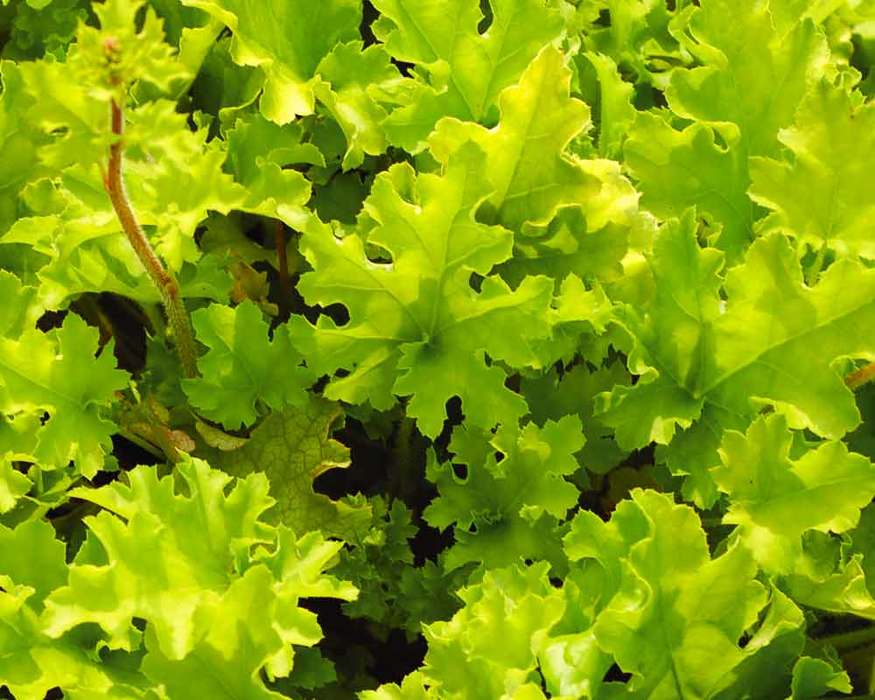
- Colour: bright green foliage
- Height: 9 to 18 inch
- Light: Full sun to partial shade
- Bloom time: They appear in summer.
3. Electra
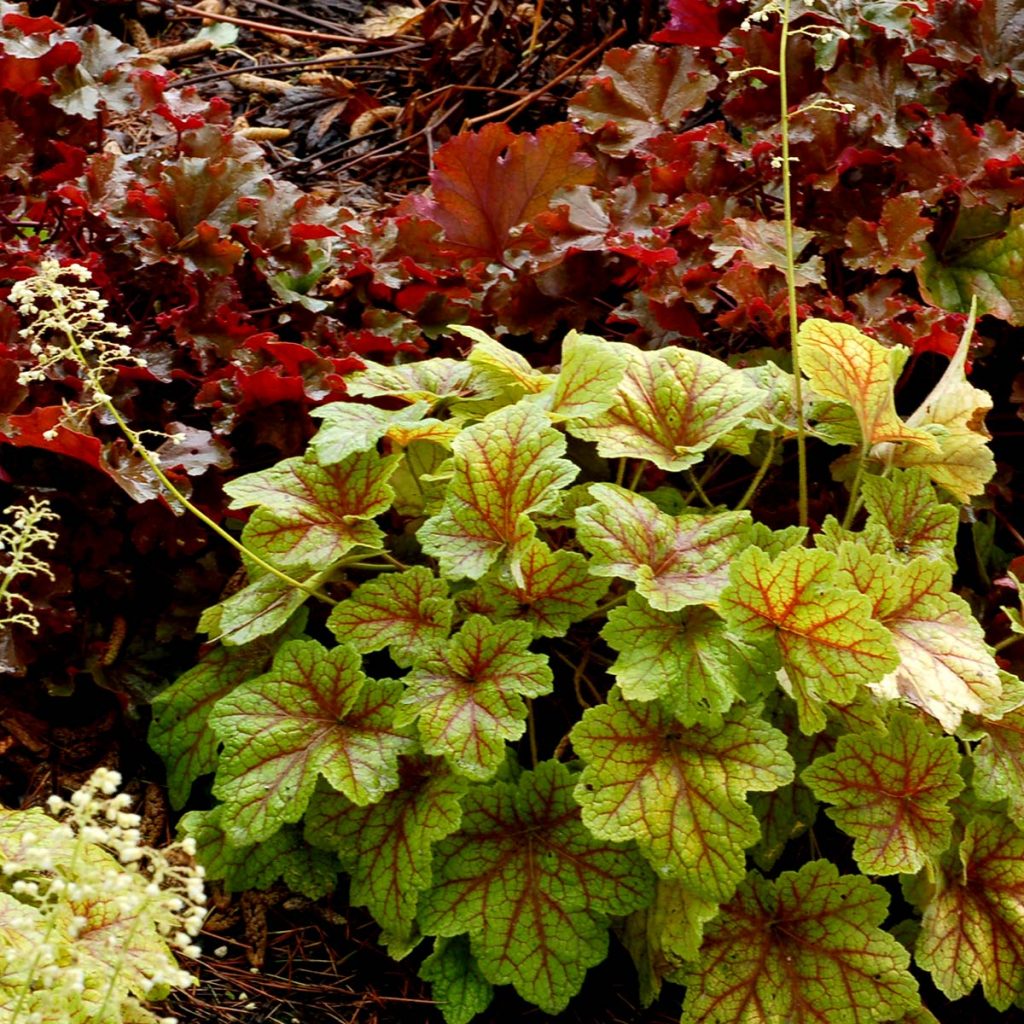
- Colour: lime green foliage
- Height: 8 to 12 inch
- Light: Full sun to partial shade
- Bloom time: They appear in late spring.
4. Venus

- Colour: white flower and silvery foliage
- Height: 8 to 12 inch
- Light: Full sun to partial shade
- Bloom time: They appear in summer
5. Caramel
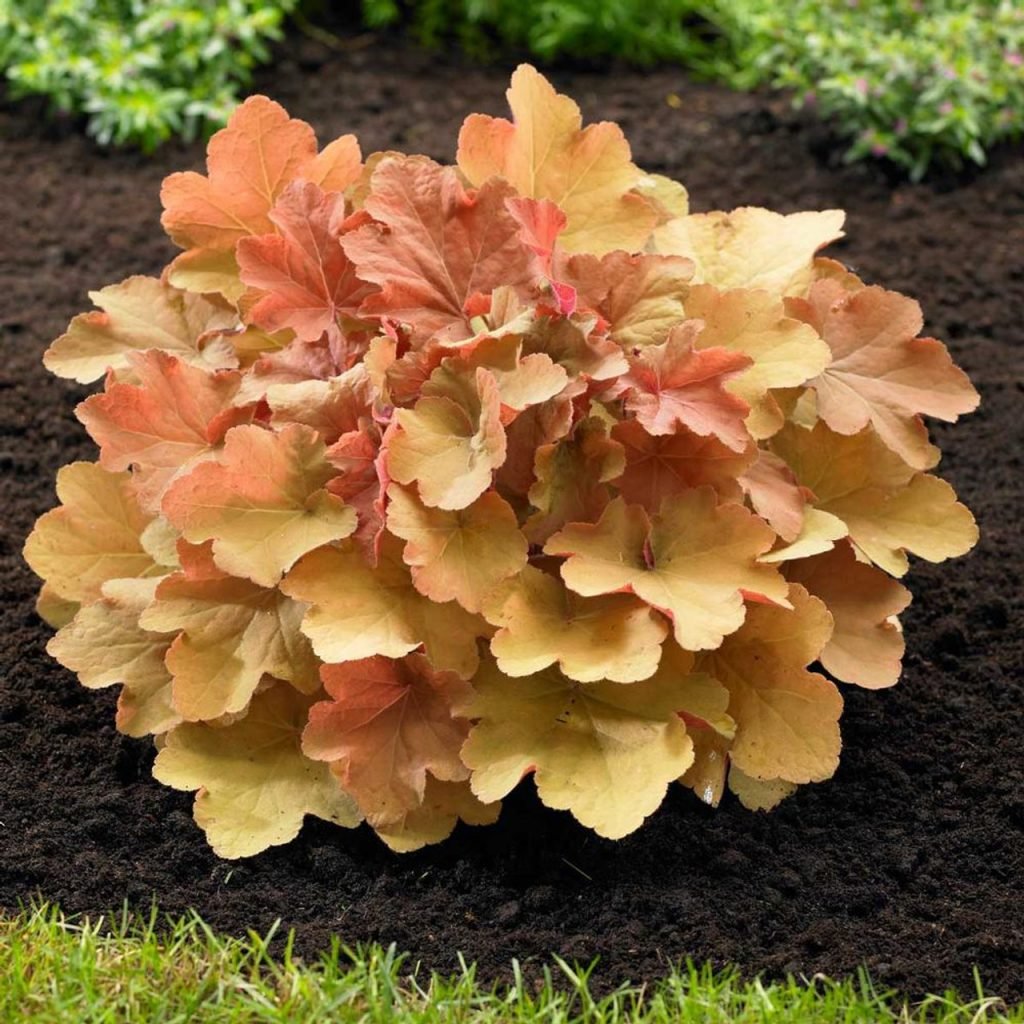
- Colour: rust, orange, and gold foliage
- Height: 8 to 12 inch
- Light: Full sun to full shade
- Bloom time: They appear in summer.
Summing It Up
All in all, armed with this new knowledge about the fascinating heuchera plant, let’s start building a home for these exquisite plants. By understanding essential and basic plant care techniques, like providing the right amount of light, planting in suitable soil, feeding them fertilizer when needed, watering them properly, and mulching when needed. Remember nurturing the Heuchera plant is a continuous process.
Regular maintenance, monitoring for pests and problems, and implementing proper propagation techniques will help the plant sustain for a long time. Now, armed with the secrets of the Heuchera plant care and growth techniques, get your hands dirty and witness the colourful transformation of your garden. The vibrant foliage, ranging from deep burgundy to shimmering silvery, will create a stunning visual display in your garden, while the delicate bell-shaped flowers will attract hummingbirds and butterflies.
The joy and satisfaction that comes from cultivating the perennials, and may the Heuchera grow throughout the year and cherish your garden.

